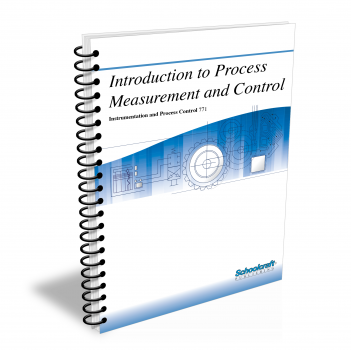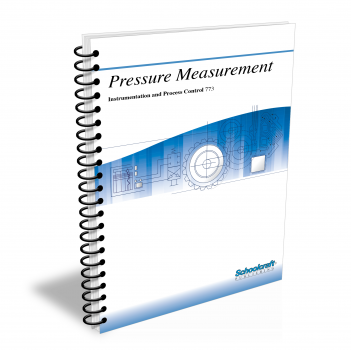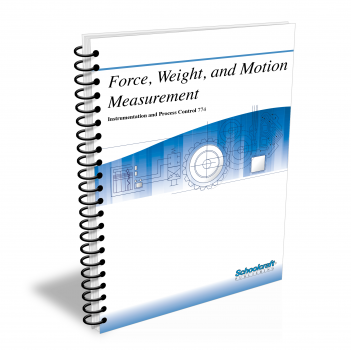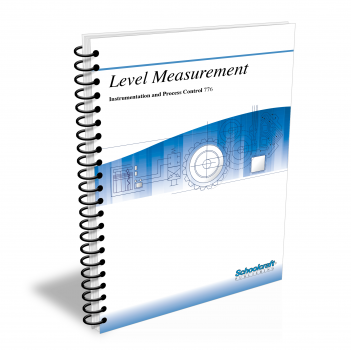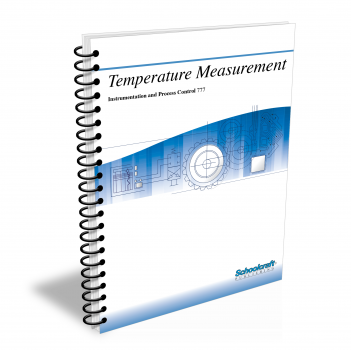Flow Measurement
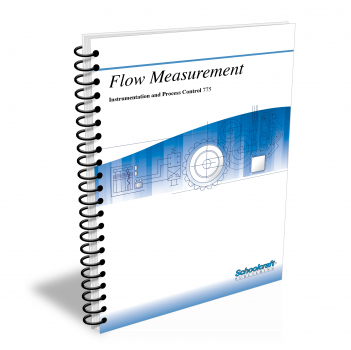
Course Number: 775
The Flow Measurement textbook discusses the principles of fluid flow and how primary devices affect fluid flow. It describes flow measurement using several kinds of secondary devices. It covers rotameters and other variable-area instruments. It explains how weirs, flumes, and other arrangements measure open-channel flow. It compares many kinds of positive-displacement meters and explains the operation of several kinds of turbine and magnetic flowmeters. The textbook describes less-common flowmeters (including vortex-precession, mass flow, and ultrasonic devices) and instruments that meter the flow of solids. Finally, it provides guidelines for safe installation and maintenance of flow devices.
Does your curriculum require additional topics not included in this textbook? Build a customized version of the Flow Measurement textbook below.
This textbook has been recently updated
to include topics lists, objectives, & key terms for every chapter.
Recommended Contact Hours – 15
Preview a Chapter
Available Supporting Material
- Table of Contents
- Exam Copies
- Suggested Titles
Table of Contents
Chapter 1: Properties of Fluid Flow
Topics: Fluids in motion; Establishing a pressure difference; Indicating flow; Factors affecting flow rate; Reynolds number
Learning Objectives:
- Explain the difference between density and relative density (specific gravity).
- Define fluid velocity, viscosity, and volume flow rate.
- Describe laminar flow and turbulent flow.
- Explain how static head, friction head, and velocity head differ from each other.
- Explain how pipe size, pipe friction, and fluid viscosity affect the measurement of fluid flow.
Chapter 2: Primary Measuring Devices
Topics: Flow measurement in filled pipes; Restricting flow; Pressure drop; Orifice plates; Flow nozzles; Turndown and rangeability; Pipe taps
Learning Objectives:
- Describe direct and indirect flow measurement methods.
- Describe how a primary device creates a differential pressure.
- Give at least three examples of common primary devices and explain how each works.
- Describe the significant features of orifice plates and explain their functions.
- Discuss the conditions that determine the length of straight pipe required for each kind of primary flowmeter.
Chapter 3: Secondary Measuring Devices
Topics: Manometers; Liquid pressure measurement; Hazards of mercury; Bellows meter; DP transmitter; Target meter; Deadweight tester
Learning Objectives:
- Explain why both accuracy and precision are required in a secondary measuring device.
- Describe how an inclined manometer differs from a conventional U-tube manometer.
- Explain how to calibrate dry and wet manometers.
- Give examples of secondary measuring devices and explain how they work.
- Explain how to calibrate a differential pressure transmitter and discuss the different outputs available.
Chapter 4: Variable-Area Instruments
Topics: Rotameters; Measuring gas flow; Specific gravity, pressure, and temperature; Float and tube shapes; Piston, vane, and special meters
Learning Objectives:
- Discuss the similarities and differences between rotameters and orifice instruments.
- Compare the benefits of linear and nonlinear scales and explain how a square-root extractor is used.
- Explain how calibration, relative density, viscosity, and temperature affect rotameter readings.
- Describe how changes in the pressure, temperature, and relative density of a gas affect the ability of a rotameter to measure its flow rate.
- Discuss the operation of piston- and vane-type flowmeters and explain why armored rotameters and orifice-plug flowmeters are used.
Chapter 5: Open-Channel Flow Devices
Topics: The weir; Notch shapes; Weir precautions and maintenance; Using nomographs to calculate flow; Flume terminology and uses; Ultrasonic and capacitance level sensors
Learning Objectives:
- Describe the structure and function of a weir.
- Identify various weir components-notch, crest, pond, bulkhead, and head gauge.
- Describe the construction and function of a Parshall flume.
- Identify the parts of a Parshall flume-crest, throat, stilling well, and diverging and converging sections.
- Explain how ultrasonic and capacitance-level measuring devices are used to detect open-channel flow rates.
Chapter 6: Positive-Displacement Meters
Topics: Piston and rotating-vane meters; Nutating-disk, lobed impeller, oval, and helix flowmeters; Dry-gas bellows meter; Calibration
Learning Objectives:
- Describe the advantages and disadvantages of positive-displacement meters.
- Describe the operation of the reciprocating piston meter and the oscillating piston meter.
- Describe the operating principles of the sliding-vane rotary meter and the nutating-disk meter.
- Identify the elements in lobed impeller, oval, and helical flowmeters.
- Explain the operation of a dry-gas bellows meter.
- Discuss the calibration of positive-displacement meters.
Chapter 7: Turbine and Magnetic Flowmeters
Topics: Turbine flowmeter types, components, principles, construction, and installation; Magnetic flowmeter construction, output, and installation
Learning Objectives:
- Describe the operating principles governing turbine flowmeters.
- Discuss the construction of turbine flowmeters.
- Discuss the advantages and disadvantages of turbine flowmeters.
- Describe the operating principle governing magnetic flowmeters.
- Describe significant advantages and disadvantages of magnetic flowmeters.
Chapter 8: Specialized Flowmeters
Topics: Vortex-precession and vortex-shedding meters; Mass, thermal, and ultrasonic flowmeters; Heat-transfer, immersion-probe, and hot-wire meters
Learning Objectives:
- Discuss in detail the operation of a vortex-precession meter.
- Define the term vortex-shedding and describe vortex-shedding meters and their output system.
- Explain mass flow and describe a Coriolis meter.
- Describe three kinds of thermal flowmeters.
- Describe the Doppler-shift, beam-deflection, and frequency-difference methods used by ultrasonic flowmeters.
Chapter 9: Metering the Flow of Solid Particles
Topics: Volumetric and mass flowmeters for solids; Belt-type solids meters; Slurries; Constant-weight feeders
Learning Objectives:
- Define the term meter factor and explain how it is obtained.
- Explain the operation of a mass flowmeter.
- Discuss the operation of the belt-type solids meter.
- Describe how a slurry is made, transported, and metered.
- Discuss the continuous measurement and control of the flow of solid material in a process.
Chapter 10: Installation and Maintenance of Flow Instruments
Topics: Primary flow elements; Pressure taps; Piping, fittings, and valves; Electrical hookup; Maintenance precautions; Preventive maintenance; Calibration
Learning Objectives:
- Describe components of a differential flow measurement system.
- List guidelines for correct installation.
- Discuss the principles of thorough and safe instrument maintenance.
- List the steps in instrument calibration.
- Discuss the basic rules of safety in instrument servicing.
Request Exam Copies
Exam Copies
Ready to see a copy of our textbooks? After selecting which textbooks you’d like to review for your course, you can submit your request by either logging in or creating an account so we know where to ship your exam copies. A representative from Schoolcraft will contact you to confirm and finish processing your request.
Exam copies are always free and yours to keep.
Selected Exam Copies
none selected
* Maximum of five copies can be ordered
